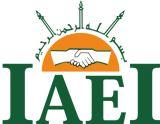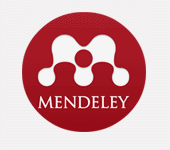Online Submissions
Already have a Username/Password for Studia Economica : Jurnal Ekonomi Islam?
Go to Login
Need a Username/Password?
Go to Registration
Registration and login are required to submit items online and to check the status of current submissions.
Author Guidelines
Studia Economica: Jurnal Ekonomi Islam (Journal of Islamic Economic), provides a forum for publishing the original research articles, review articles from contributors, and the novel technology news related to Islamic economics, banking, and finance.
Research articles dealing with Islamic economics, Islamic banking, Islamic finance, etc. are particularly welcome. The journal encompasses research articles, original research report, reviews, short communications and scientific commentaries in Islamic economics, banking, and finance.
All papers submitted to the journal should be written in good Indonesian or English language. Authors for whom English is not their native language are encouraged to have their paper checked before submission for grammar and clarity. English language and copyediting services can be provided by: International Science Editing and Asia Science Editing. The work should not have been published or submitted for publication elsewhere. The official language of the manuscript to be published in Studia Ecconomica journal is Indonesia and English.
Guideline for Online Submission
Author should first register as Author and/or is offered as Reviewer through the following address: http://jurnal.uinsu.ac.id/index.php/studiaeconomica/user
Author should fulfil the form as detail as possible where the star marked form must be entered. After all form textbox was filled, Author clicks on “Register” button to proceed the registration. Therefore, Author is brought to online author submission interface where Author should click on “New Submission”. In the Start a New Submission section, click on “’Click Here’: to go to step one of the five-step submission process”. The following are five steps in online submission process:
- Step 1 - Starting the Submission: Select the appropriate section of journal, i.e. Original Research Articles, Review Article, or Short Communication. Thus, author must check-mark on the submission checklists.
- Step 2 – Uploading the Submission: To upload a manuscript to this journal, click Browse on the Upload submission file item and choose the manuscript document file to be submitted, then click Upload button.
- Step 3 – Entering Submission’s Metadata: In this step, detail authors metadata should be entered including marked corresponding author. After that, manuscript title and abstract must be uploaded by copying the text and paste in the textbox including keywords.
- Step 4 – Uploading Supplementary Files: Supplementary file should be uploaded including Covering/Submission Letter, and Signed Copyright Transfer Agreement Form. Therefore, click on Browse button, choose the files, and then click on Upload button.
- Step 5 – Confirming the Submission: Author should final check the uploaded manuscript documents in this step. To submit the manuscript to Studia Economica journal, click Finish Submission button after the documents is true. The corresponding author or the principal contact will receive an acknowledgement by email and will be able to view the submission’s progress through the editorial process by logging in to the journal web address site.
After this submission, Authors who submit the manuscript will get a confirmation email about the submission. Therefore, Authors are able to track their submission status at any time by logging in to the online submission interface. The submission tracking includes status of manuscript review and editorial process.
General Author Guidelines
- Writing is the author of an original work (no plagiarism) and have never been published or not being in publications in other media;
- Scripts can be used Indonesian or English language
- Scripts can be conceptual or research results;
- The manuscript should contain the scientific information in the fields of economics, management, business and finance;
- The length of the manuscript between 5000 s/d 8000 word, 1 spacing, font Times New Roman, size 12;
- Citations sentence: System citation is bodynote;
- Bibliography: bibliographical references written use reference manager by APA (American Psychological Association) style;
- The rules of writing is as follows
Structure of conceptual or philosophical manuscript
- Title; the title should be short, clear, and informative, but does not exceed 16 words
- Subtitle (related on title)
- Author’s name and institution; the author’s names should be accompanied by the author’s institutions and email addresses, without any academic titles and/or job title.
- Abstract and keywords; the abstract should be less than 150-200 words. The key words should be 2 to 5 phrases.
- Introduction; this section explains the background of the study, and aims of the manuscripts. It should be written without numbers and/or pointers.
- Theoretical framework; this section explains the theoretical framework that used on this research, a review on the previous research in the area.
- Discussion
- Conclusion; this section concludes and provides policy implications, if any, of the study.
- Reference; this section lists only the papers, books, or other types of publications referred in the manuscript.
Structure of field research resulted manuscripts;
- Title; the title should be short, clear, and informative, but does not exceed 16 words.
- Author’s name and institution; the author’s names should be accompanied by the author’s institutions and email addresses, without any academic titles and/or job title.
- Abstract and keywords; the abstract should be less than 150-200 words. The key words should be 2 to 5 phrases.
- Introduction; this section explains the backround of the study, and aims of the manuscripts. It should be written without numbers and/or pointers.
- Teoritical framework; this section explains the theoretical framework that used on this research, a review on the previous research in the area.
- Methods; this section describes the tools of analysis along with the data and their sources.
- Data Analysis;
- Discussion; this section explains the results of the study.
- Conclusion; this section concludes and provides policy implications, if any, of the study.
- Reference; this section lists only the papers, books, or other types of publications referred in the manuscript.
Authors can also follow the journal guidelines available in Word: template
NOTE: It is suggested the use of a reference manager at styling the bodynote and the bibliography, such as Zotero, Mendeley, et cetera.
Submission Preparation Checklist
As part of the submission process, authors are required to check off their submission's compliance with all of the following items, and submissions may be returned to authors that do not adhere to these guidelines.
- The submission has not been previously published, nor is it before another journal for consideration (or an explanation has been provided in Comments to the Editor).
- The submission file is in OpenOffice, Microsoft Word, RTF, or WordPerfect document file format.
- Where available, URLs for the references have been provided.
- The text is single-spaced; uses a 12-point font; employs italics, rather than underlining (except with URL addresses); and all illustrations, figures, and tables are placed within the text at the appropriate points, rather than at the end.
- The text adheres to the stylistic and bibliographic requirements outlined in the Author Guidelines, which is found in About the Journal.
- If submitting to a peer-reviewed section of the journal, the instructions in Ensuring a Blind Review have been followed.
Copyright Notice
Rights of Authors
Authors retain the following rights:
1. Copyright, and other proprietary rights relating to the article, such as patent rights,
2. the right to use the substance of the article in future own works, including lectures and books,
3. the right to reproduce the article for own purposes, provided the copies are not offered for sale,
4. the right to self-archive the article.
User Right
Under the Creative Commons Attribution-NonCommercial 4.0 International (CC-BY-NC), the author(s) and users are free to share (copy, distribute and transmit the contribution).
Licensing
All journal content is licenced under a Creative Commons Attribution NonCommercial 4.0 International License that allows others to use the articles for non-commercial purposes with an acknowledgement of the work's authorship and initial publication in this journal.
STUDIA ECONOMICA: Jurnal Ekonomi Islam is licensed under a Creative Commons Attribution-NonCommercial 4.0 International License
You are free to:
- Share — copy and redistribute the material in any medium or format
- Adapt — remix, transform, and build upon the material
- The licensor cannot revoke these freedoms as long as you follow the license terms.
Privacy Statement
The names and email addresses entered in this journal site will be used exclusively for the stated purposes of this journal and will not be made available for any other purpose or to any other party.
Author Fees
This journal charges the following author fees.
Article Submission: 0.00 (IDR)
Authors are not required to pay an Article Submission













